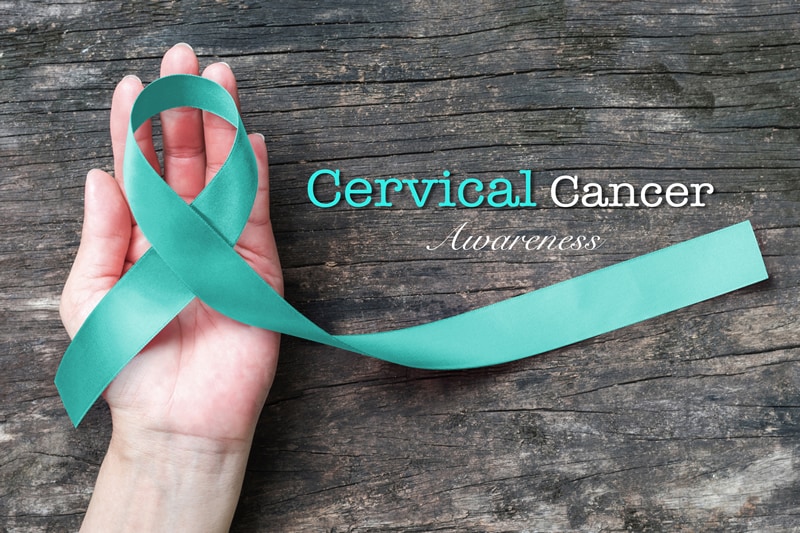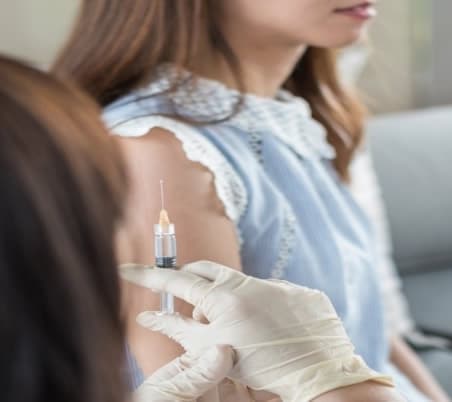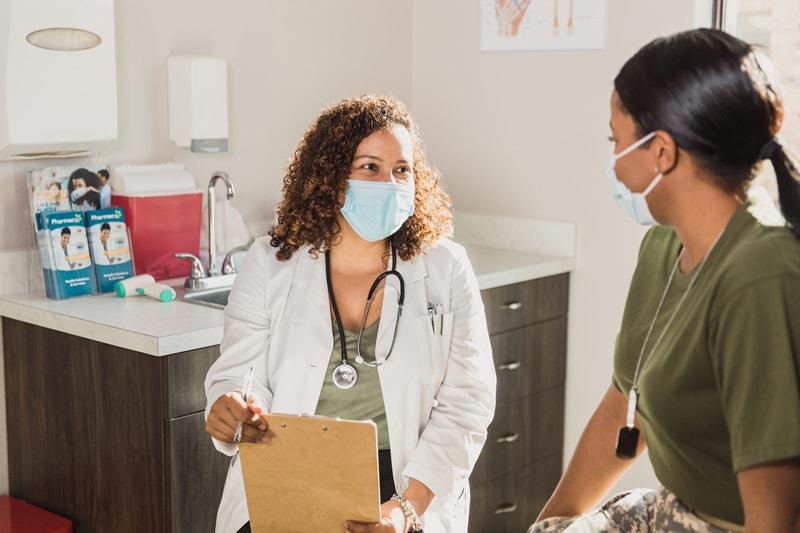Prevent Cervical Cancer
January 24, 2023

Cervical cancer is the fourth most common cancer in women worldwide and fourth in cancer-related deaths. In 2020, there were an estimated 604,000 diagnosed new cases of cervical cancer and 342,000 deaths worldwide. Learn about the appropriate screening tests and the HPV vaccine to help prevent cervical cancer.
All women are at risk for cervical cancer. However, data show it occurs most often in women over the age of 30. The primary cause of cervical cancer is human papillomavirus (HPV), an extremely common family of viruses that are transmitted through sexual contact. HPV causes almost all cervical cancers. In the United States, Hispanic, non-Hispanic American Indian and Alaska Native, and non-Hispanic Black women have higher rates of new cervical cancer cases than women of other races and ethnicities. These higher rates may reflect differences in cervical cancer screening rates and outcomes that vary by socioeconomic status and access to quality care.
Cervical Cancer Prevention

Prevent cervical cancer with the HPV vaccination
CDC leads efforts in preventing and detecting cancers early and improving the overall health of cancer survivors. For example, CDC’s Inside Knowledge About Gynecologic Cancer Campaign shares educational materials with communities and healthcare providers on the five types of gynecologic cancers: cervical, ovarian, uterine, vaginal, and vulvar.
When found early and managed effectively, cervical cancer is preventable, treatable, curable, and associated with long-term quality of life. CDC’s National Breast and Cervical Cancer Early Detection Program (NBCCEDP) provides breast and cervical cancer screenings and diagnostic services to women who have low incomes and are uninsured or underinsured. Access to childhood immunizations through the Vaccine for Children (VFC) program can aid in increasing HPV vaccinations and help prevent future cases of cervical cancer.
Routine cancer screenings help prevent cervical cancer. The United States Preventive Services Task Force and the World Health Organization both recommend that women receive appropriate cervical cancer screenings. These screenings help to identify precancers that may lead to cervical cancer. In the United States, women aged 21– 65 years, who receive regular cervical cancer screenings are less likely to get cervical cancer and less likely to die from it. Women aged 21-29 years should only receive a Pap test to screen for cervical cancer. Women aged 30-65 years have three available options for cervical cancer screening: Pap testing alone, HPV testing alone, and HPV and Pap testing together. In general, women older than age 65 don’t need cervical cancer screening if their previous tests were negative and they have had three Pap tests, or two HPV tests (with or without the Pap test), in the preceding 10 years. However, there may be situations in which a health care provider may recommend continued Pap testing.
HPV vaccination is safe and effective. CDC recommends HPV vaccination at age 11 or 12 years (or can start at age 9 years) and for everyone through age 26 years, if not vaccinated already. Vaccination is also recommended for teens and young adults (15 – 26 years) who are not already vaccinated.
- CDC recommends two doses of HPV vaccine for persons who start the series before age 15 years. Three doses of the vaccine are recommended for those who start the series at age 15 years or older. Three doses are also recommended for people with weakened immune systems aged 9 through 26 years.
- Some adults between the ages of 27 and 45 years, who are not already vaccinated, may decide to get the HPV vaccine after consulting with their medical provider about their risk for new HPV infections.
Working Together to Reduce Cervical Cancer
We all play a role in preventing cervical cancer. Learn how you can lower your risk and promote the prevention and early detection of cervical cancer.
What can you do?
- Consult with your healthcare provider to understand the risk for new HPV infections and benefits of receiving the HPV vaccine.
- Ask your medical provider to screen for cervical cancer during gynecological visits.
- Receive cervical cancer screening tests to prevent cervical cancer or detect it early, when it easiest to treat.
- Continue to receive cervical cancer screenings, even after obtaining all recommended doses of the HPV vaccine.
- Practice safer sex and routinely get screened for any sexually transmitted infections.
- Avoid smoking to reduce cervical cancer risk.
What can parents do?
- Vaccinate both young girls and boys with the HPV vaccine to prevent future cases of HPV-associated cancers.
- Encourage children to receive the HPV vaccine at an early age.
- Remind children to be screened for cervical cancer when they are aged 21 years or older.
What can healthcare professionals do?

Recommendations for cervical cancer screening.
- Recommend that preteens and teens get vaccinated against HPV.
- Educate parents on the benefit of HPV vaccinations.
- Co-administer the HPV vaccination with other adolescent vaccines to reduce the number of clinical visits.
- Screen women for cervical cancer during regular gynecological visits. Remember family doctors and internists can also do cervical cancer screening. If a precancer or cancer is detected, get the right follow-up care
- Help women understand which screening tests are best for them and when to get them.
What can communities do?
- Collaborate with partners and advocates to educate community members on the prevention and control of cervical cancer.
- Build partnerships with local public health organizations and health departments to advise community members about cervical cancer prevention.
- Identify ways to increase accessibility to cervical cancer services with your local health officials and address challenges such as transportation and healthcare costs that may deter one from seeking medical care.
- Point community members to HPV vaccinations and cervical cancer screenings.
- Communicate accurate and culturally-relevant public health messages about cervical cancer prevention.